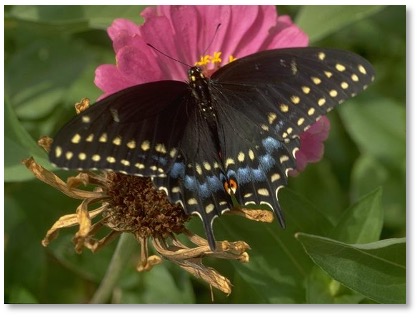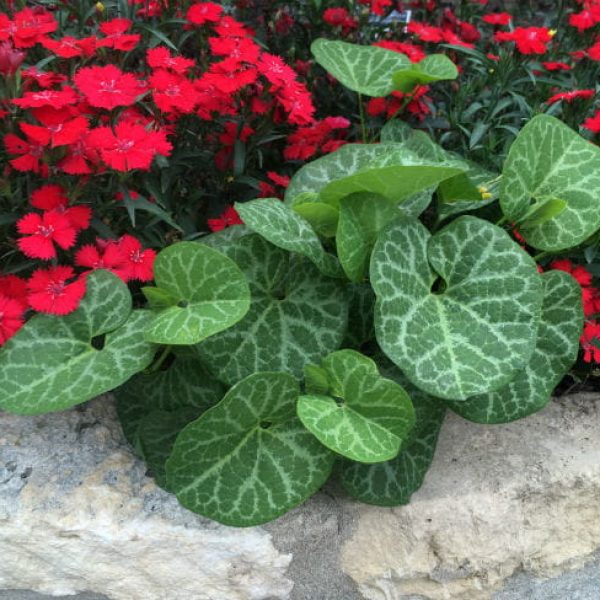There are many kinds of Dutchman’s pipevine. There is a giant pipevine, small leaf pipevine, different blooms, various growth habits. It is a large group of curious plants. All the varieties are a food source for the black and pipevine swallowtail butterfly caterpillars. In fact, it is the only plant where the pipevine swallowtail butterfly will lay its eggs. I never tire of watching these beautiful butterflies dry their wings upon entering the world.
I’ve had the white-veined Dutchman’s pipevine, Aristolochia fimbriata, for many years. I use it as a ground cover under hollies along the front of the house. This bed gets morning sun and afternoon shade. The delicate foliage is heart-shaped and green with showy silver veining. Small fragrant, brown-speckled flowers with a fringe of thread-like hairs at the opening provides a summer long show. This deciduous groundcover grows 6-12 inches high and the mound spreads about 2-3 feet with tuberous roots. You may want to mark its place in the garden, so you do not step on it when the ground is bare in its dormancy.
I get a lot of questions and comments on this unusual plant, and I’ve shared it with many people.

The plant is a native of Bolivia, Brazil, and North-East Argentina. The genus name, Aristolochia, is a combination of two words. The Greek word, aristos, translates to “best.” The Greek word, locheia, translates to “childbirth.” This refers to the shape of the flower which resembles a human fetus. The species name, fimbriata, is Latin and translates to “fringed.” The common name, Dutchman’s pipe, refers to the shape of the flowers that resemble the Meershaun smoking pipes once used in Europe.
Propagation: It will reseed itself on bare soil. I’ve had some success transplanting it. This pipevine has a long tuber, so dig deep and get it all. Of course, you can harvest the seed and start your seedlings.
Soil: It prefers a well-draining moist, rich soil. Once established, it will tolerate some drought.
Sunlight: Morning sun with afternoon shade is preferred. However, it will tolerate full shade and can tolerate full sun with adequate water.
Hardiness: Zones 7-10. Bexar County is split between zones 7b in the north and 8a in the southern part of the county. Therefore, the white-veined Dutchman’s pipevine is considered a hardy perennial for Bexar County. While frost kills back the above-ground foliage, it returns with fresh growth in the spring. If we have a particularly long, hard freeze we may lose some of it if not protected.

Both the black and pipevine swallowtail butterflies use the plant as a food source. The caterpillars often strip the foliage in mid-summer, but the foliage regrows from the roots. The adult butterflies will return to lay more eggs later in the year. Depending upon our San Antonio temperature and rainfall fluctuations, some years I get to see this beautiful transformation twice. While this species can cause problems if ingested by humans, the swallowtail butterflies are immune to the poison.
White-veined Dutchman’s pipevine is reported to be deer tolerant. It works well in shady spots that can use a bright pop of color with its silvery-green leaves. Plus, its trailing habit also makes it a beautiful choice for a hanging basket or cascading over a garden wall. This little cutie can be used many ways in your landscape while inviting beautiful pollinators. This is a win – win for any gardener!
Written by: Ruth Rea, Bexar County Master Gardener
First Printed: 11/1/2021
Sources:
NC STATE EXTENSION, North Carolina Extension Gardener Plant Toolbox
Texas A&M AgriLife Extension, Field Guide to Common Texas Insects – Black Swallowtail
Arizona-Sonora Desert Museum, plant care information
Maggie’s Garden

